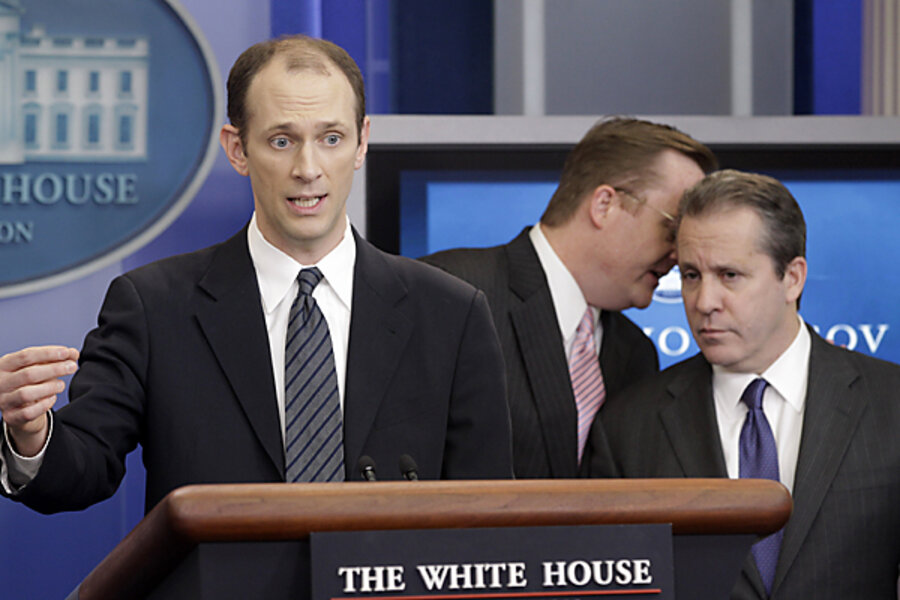What the president’s economic report leaves out
Loading...
Today I got a note from Bruce Bartlett pointing out that in the new Economic Report of the President there is no mention of the terms “tax reform” or “entitlements.” (Bruce did a search of the entire pdf document.) But that doesn’t surprise me because even if the report had actually discussed better ways to raise revenue or to trim the costs of the Social Security and Medicare programs, it would have judiciously avoided using the dirty words “taxes” or “entitlements.”
More disappointing is the fact that it wasn’t just semantics. The President’s Council of Economic Advisers really did avoid the substance of the “tough choices” on tax and spending policy–you know, all that “fiscal responsibility” and “living within our means” that the President loves to mention only as an abstract virtue and never as a specific proposal.
And the CEA even went beyond not emphasizing the need for tax and entitlement reform. With their main theme for this year’s report being “The Foundations of Growth” (the title of their Chapter 3), they had the nerve to completely leave out an explanation of how deficits very directly harm economic growth by reducing public and national (public plus private) saving. The omission is obvious from the first sentence of the second paragraph in Chapter 3, which says:
At the core of the Nation’s economic growth is our capacity to innovate, educate, and build.
…but then goes on to devote the rest of the chapter to the innovating, educating, and building (the “investing”), just assuming we already have the capacity (the “saving”) to do all that innovating, educating, and building. But we don’t have either the private saving or public saving to fund those investments, so we have to be talking about borrowing to finance those investments. And the problem with borrowing to finance even the kind of spending that may encourage economic activity is that there’s no guarantee that we will come out ahead on net, after we have to repay the debt (with interest).
During the Clinton Administration we learned that reducing the federal budget deficit contributed positively to the economy’s productive capacity by boosting national saving. In President Clinton’s final economic report, we explained that the direct, positive boost to public saving was barely offset by any decline in private (household and business) saving.
Now take it in reverse, because in this economic report the Obama Administration is trying to make the case for deficit-financed ‘investments”–all those things that fall under the “innovating, educating, and building’ umbrella–as investments that are good for economic activity. I don’t dispute that those types of spending and tax cuts will generate specific types of economic activity that otherwise would not have happened. But it is another matter entirely whether those investments will pay off so well that they will grow the economy even net of the negative effect of higher budget deficits on national saving. When you borrow to finance an investment, you start off in a hole. To end up better than before you have much further to climb.
Many of these ideas the Obama Administration has for new spending and tax cuts to encourage certain investments in our economy are good ones. But whether they are good enough to overcome the handicap of deficit financing, I’m not so sure. (Some of you might recognize that these deficit-financed investments are destined to generate the Democrats’ version of the Republican push for “dynamic scoring” of deficit-financed tax cuts.) A far surer payoff could be had if instead of deficit financing these investments we paid for them by reducing the types of federal spending and tax cuts that are much less productive uses of our precious resources.
For the President’s economists to not explain that deficit financing tends to reduce, not increase, national saving and economic growth–in a report which purports to address the central question “how can we best grow the economy?” no less–is extremely disappointing and even, I think, dishonest.
What happened to the Austan Goolsbee (now President Obama’s chair of the CEA) who wrote this just 4 years ago?
Add/view comments on this post.
--------------------------
The Christian Science Monitor has assembled a diverse group of the best economy-related bloggers out there. Our guest bloggers are not employed or directed by the Monitor and the views expressed are the bloggers' own, as is responsibility for the content of their blogs. To contact us about a blogger, click here. To add or view a comment on a guest blog, please go to the blogger's own site by clicking on the link above.





